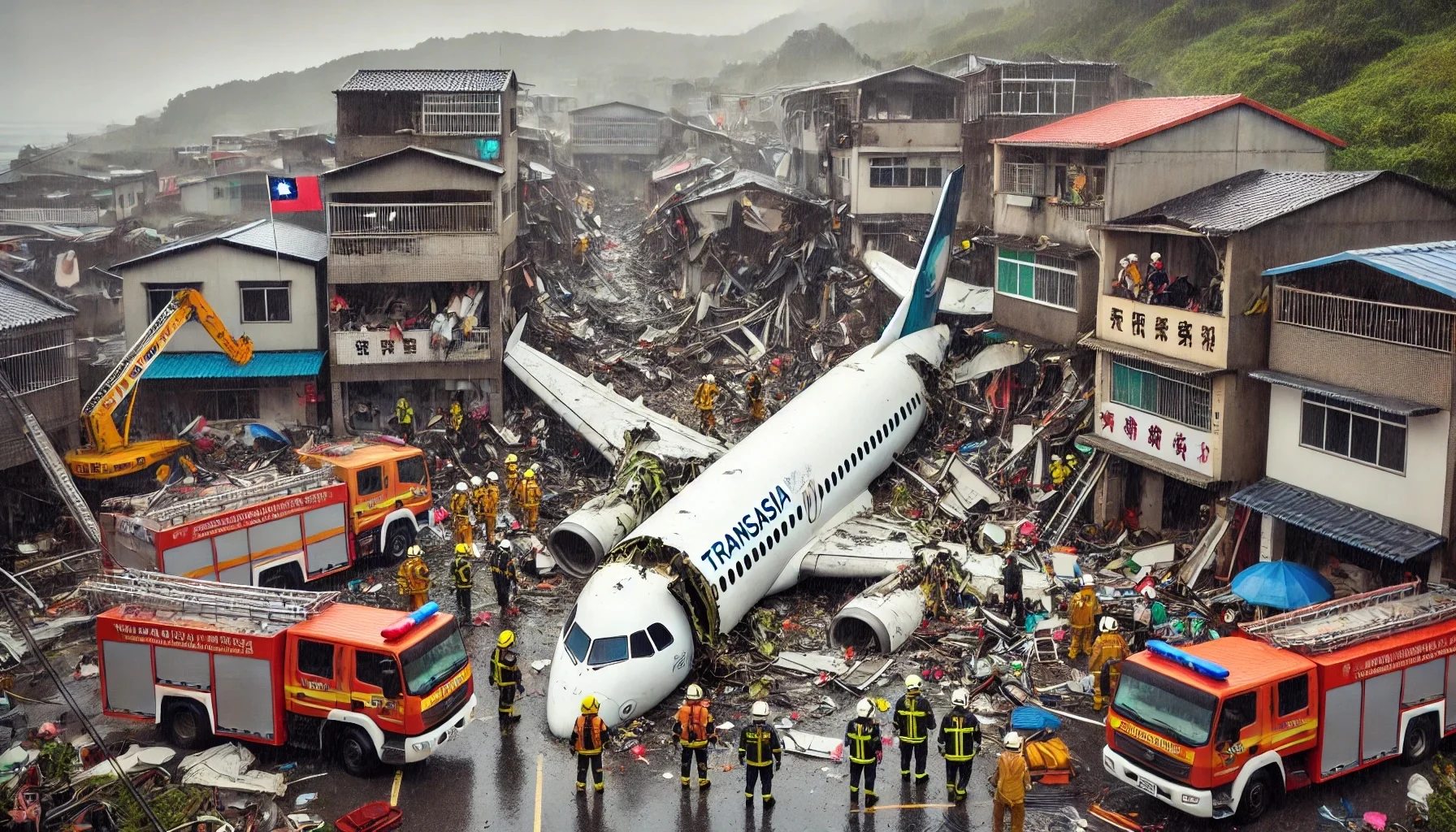
The Crash of TransAsia Airways Flight 222
by: The Calamity Calendar Team
July 23, 2014
The Fateful Flight
On the evening of July 23, 2014, TransAsia Airways Flight 222 departed from Kaohsiung Siaogang Airport, bound for Magong Airport on Penghu Island. The ATR 72-500 aircraft carried 58 people: 54 passengers and 4 crew members. The flight took off at 00:53 local time (16:53 UTC), navigating through challenging weather conditions brought by Typhoon Matmo.
Descent into Tragedy
As Flight 222 approached Magong Airport, the typhoon’s impact was palpable. Strong winds and heavy rain reduced visibility and complicated the landing process. At 19:00 UTC, the flight was cleared for its initial landing attempt but had to abort due to poor visibility and strong crosswinds. Undeterred, the crew prepared for a second attempt.
The Crash
At approximately 19:06 UTC (03:06 local time on July 24), during the second landing attempt, the aircraft deviated from its course. It crashed into residential buildings in Xixi Village, just 1,000 meters from the runway. The crash resulted in a massive fire, further complicating rescue efforts.
Thanks for subscribing!
Immediate Aftermath
The scene was chaotic. The crash caused significant damage to several houses and other structures in the village. Local residents rushed to assist, joined swiftly by emergency responders. Despite their efforts, 48 people perished, including the pilot, co-pilot, and two cabin crew members. Ten passengers survived, though they sustained injuries.
Response and Recovery
Firefighters, police, and medical teams responded promptly. Rescue operations were hampered by the intense fire and debris, but all survivors were eventually evacuated. The tragedy led to a temporary suspension of TransAsia Airways’ operations and increased scrutiny of the airline’s safety protocols.
Investigation Findings
Taiwan’s Aviation Safety Council (ASC), with assistance from the French Bureau of Enquiry and Analysis for Civil Aviation Safety (BEA) and the aircraft manufacturer ATR, conducted a thorough investigation. The findings were sobering: pilot error was identified as the primary cause. The crew failed to maintain proper altitude and did not execute a go-around procedure in a timely manner. The adverse weather conditions significantly contributed to the crash, but the failure to adhere to safety protocols was pivotal.
Lessons Learned
The crash of Flight 222 underscored critical issues in aviation safety, particularly concerning pilot decision-making in adverse weather conditions. The Civil Aeronautics Administration (CAA) of Taiwan responded by implementing stricter regulations for pilot training, especially for adverse weather conditions. TransAsia Airways was mandated to enhance its safety management systems and crew resource management training.
A Legacy of Safety
The crash of TransAsia Airways Flight 222 remains a significant case study in aviation safety. It highlights the necessity for stringent regulatory oversight and continuous improvements in pilot training programs. The tragedy has reinforced the importance of adhering to established safety protocols to prevent similar accidents in the future.
The legacy of Flight 222 is a reminder of the inherent risks of aviation and the relentless pursuit of safety. The lessons learned continue to shape policies and practices, aiming to ensure that such a tragic event never happens again.
Stay in the Loop!
Become a Calamity Insider and get exclusive Calamity Calendar updates delivered straight to your inbox.
Thanks! You're now subscribed.